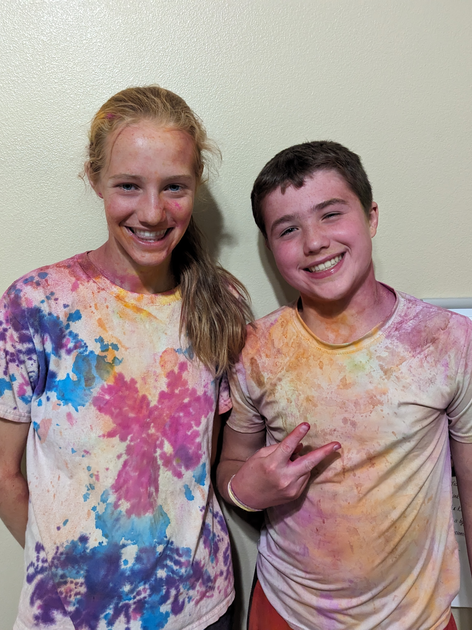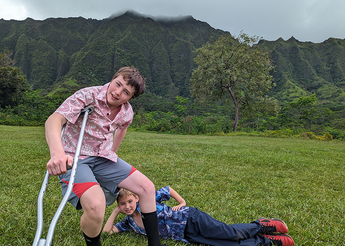
Gunnar Faler, right, is doing well after needing an ACL reconstruction and limb lengthening through St. Luke's.

Gunnar Faler, right, is doing well after needing an ACL reconstruction and limb lengthening through St. Luke's.
Patient Stories

Gunnar Faler, here on vacation after surgery, is back feeling comfortable after two big procedures.
By Chris LangrillLast Updated October 18, 2024
Truth be told, Gunnar Faler really didn’t want to have the surgeries. For a teenager, they were pretty daunting.
But, in the end, Gunnar Faler’s story is a successful one — largely because of technological advances and because he had the right doctors on his side.
Gunnar’s journey began a few years ago, when his mom, Erica Faler, thought something seemed a little “off.”
“Doctors went to check for scoliosis, and it didn’t look right,” Erica Faler said. “Then they went, ‘Oh, one leg is longer than the other.’ It was only a few centimeters at that point, but in the next year or so it got much more pronounced.”
Eventually, surgery became a necessity to reconstruct his ACL.
“His ACL wasn’t developed, and it wasn’t stabilizing, to the point where he needed a knee brace just to get through the day,” Erica said.
Dr. Tracye Lawyer helped reconstruct Gunnar’s knee.
Gunnar returned to playing basketball and participating in other activities while wearing shoe lifts, but eventually those lifts reached their limit.
“His lifts were getting so big that they didn’t make them any bigger,” Erica said.
Enter Dr. Krysten Bell, a St. Luke’s pediatric orthopedic surgeon.
Dr. Bell was hopeful about making Gunnar’s life better going forward.
“You can get hip pain and back pain and then even a back curve as you go through life with a limb length that different,” Dr. Bell said. “You can always try to live with a lift and have no surgery, but the technology is getting so much better that we can make people’s lives so much more comfortable in the years ahead.”
Still, there were decisions to be made. The Falers were glad they had Dr. Bell on their side.
“Dr. Bell did a great job of listing all the different options,” Erica said. “She went through the pros and cons with our options. In the end, she just said, ‘You have to do what feels right for your family.’ It made me feel like I was in control of my choices, and it gave me confidence in the choice we made together.”
Said Gunnar: “She explained things so well, and also she’s super nice.”
In the end, the Falers decided to undergo a surgery using the Precice system, which uses a magnetic nail that is implanted and helps the limb grow incrementally over time.
“I started down this road (as a pediatrician) about 14 years ago, and at that time they were using external fixators, but internally they had to ratchet a person’s leg,” Dr. Bell said.

Dr. Krysten Bell with a young patient as a sibling looks on.
Now, the patient takes home a large magnet that is computer programmed, and they use it multiple times a day to lengthen their leg, just by a fraction of a millimeter.
“It’s very cool, because you can program it and dial it in,” Dr. Bell said.
In the end, the process lengthened Gunnar’s femur 5 centimeters, or approximately 2 inches. Gunnar would be the first to admit the process wasn’t easy. He had to be diligent about using the magnet and he wasn’t able to put weight on his leg for a few months.
Still, Dr. Bell sees the procedure as a game-changer for some patients.
“The external fixator used to be the only real option, and it’s pretty intimidating for people to have this big frame on the outside of their leg and you have to turn dials multiple times a day,” Dr. Bell said. “It still works well, and it can still be a good option for a lot of things, but it’s pretty cool to have something that you can totally hide inside and not draw so much attention.”
Some of the benefits of the newer system include quicker healing and patients are able to bear weight faster. The technology is also extremely accurate in dialing in the desired length, and it results in fewer scars.
Dr. Bell is grateful St. Luke’s can provide the option of cutting-edge technology for patients like Gunnar.
“He’s a happy kid with a good outcome,” she said.